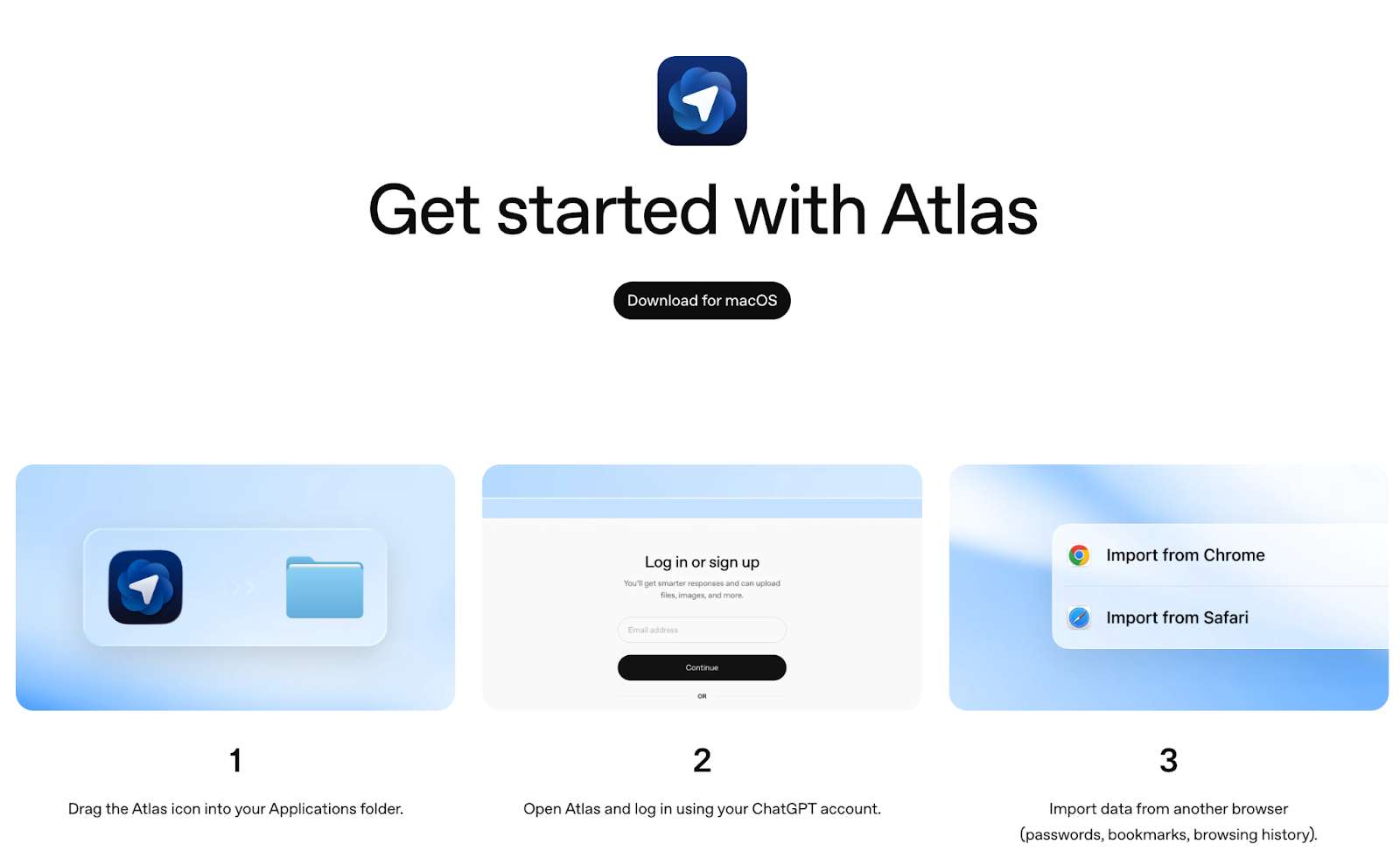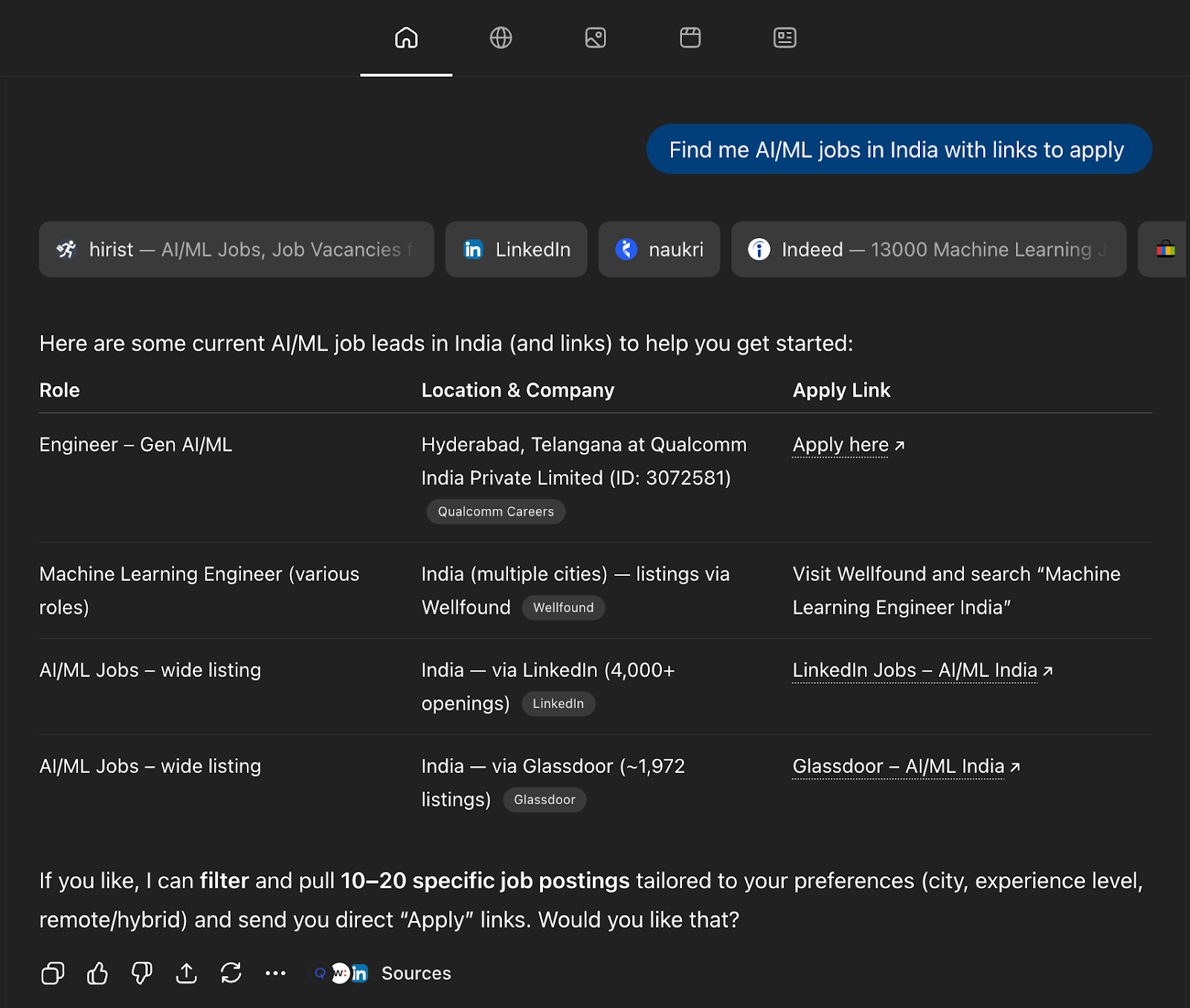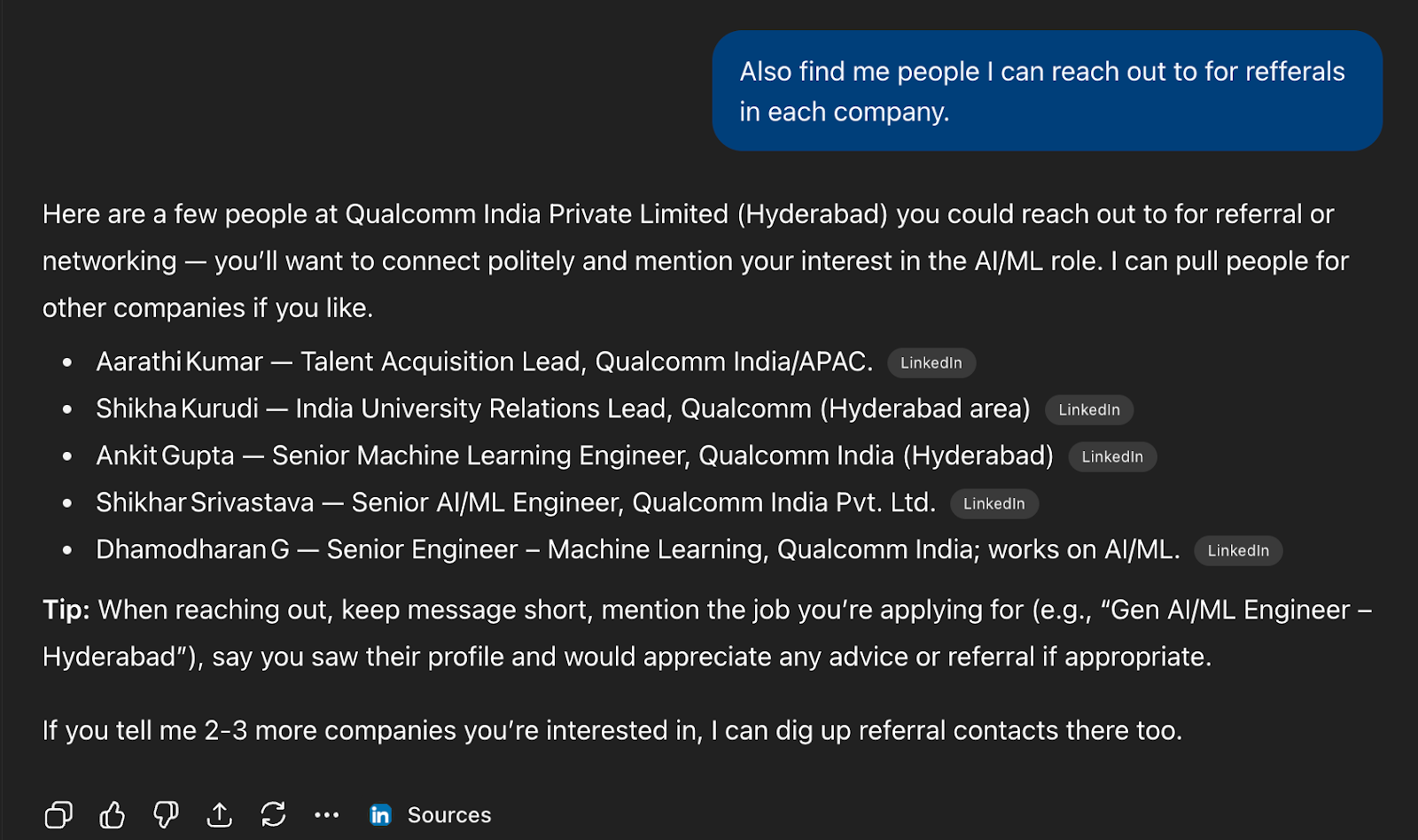Track
One of the launches that excited me most this month is ChatGPT Atlas, a new browser with ChatGPT built in. In this guide, I’ll show how ChatGPT Atlas performs on real tasks end-to-end, from quick lookups to multi-step automations. We’ll cover:
- Basic search
- Restaurant discovery
- Job hunting with apply links and referral leads
- Fact-checking with sources
- Agent mode for nutrition research and shopping
- Study and Learn
- Deep research
- YouTube lecture to summary
By the end, you’ll know where Atlas already shines, where Agent mode still needs a human in the loop, and how to use page visibility, memories, and citations to keep your workflow fast and trustworthy. You can also check out our guide to ChatGPT Apps to see what else is new with ChatGPT.
What Is ChatGPT Atlas?
ChatGPT Atlas is a desktop web browser with ChatGPT built in. Instead of copy-pasting between a site and a chat tab, Atlas lets ChatGPT see the current page, answer in context.
When you enable agent mode, it can take actions like opening tabs and clicking elements on your behalf. Atlas also supports browser memories, so ChatGPT can remember key details from sites you visit and reuse that context in later chats.
Here are some key features of the Atlas browser:
- Search and chat: Atlas allows the user to ask a question or enter a URL on a new tab and pivot to links, images, videos, or news when available.
- Context in the window: It uses the page visibility toggle per site to control what ChatGPT can see. The Incognito mode turns everything off for total privacy from ChatGPT as well.
- Agent mode: The Agent mode allows ChatGPT to perform multi-step tasks in the browser with the user supervising its actions.
- Privacy controls: Browser memories are optional and always viewable with history cleaning abilities.
How Does ChatGPT Atlas Work?
Atlas functions similarly to a standard web browser but includes integrated ChatGPT capabilities. Here's how it operates:
- Open a page and ask ChatGPT a task tied to what’s on screen.
- ChatGPT reads the visible page and returns an answer with citations or structured output.
- Optionally enable with agent mode to let it open tabs, navigate, and complete the task.
- Users can ask follow-ups, export summaries, or keep working in the same window without juggling context from one tab to another.
Note: Agent mode can’t run arbitrary code in your browser, install extensions, or access your computer’s file system. It pauses on sensitive flows and respects your page-visibility settings.
Let’s begin by downloading and installing the Atlas browser.
Download and install
The Atlas browser is currently only available for Mac OS users and requires the following steps to get started.
- Download the Atlas installer (.dmg) file.
- Open the .dmg, then drag Atlas into Applications.
- Eject the installer from Finder.
- Open Atlas from Applications or via Spotlight.
To begin, log in to your ChatGPT account.
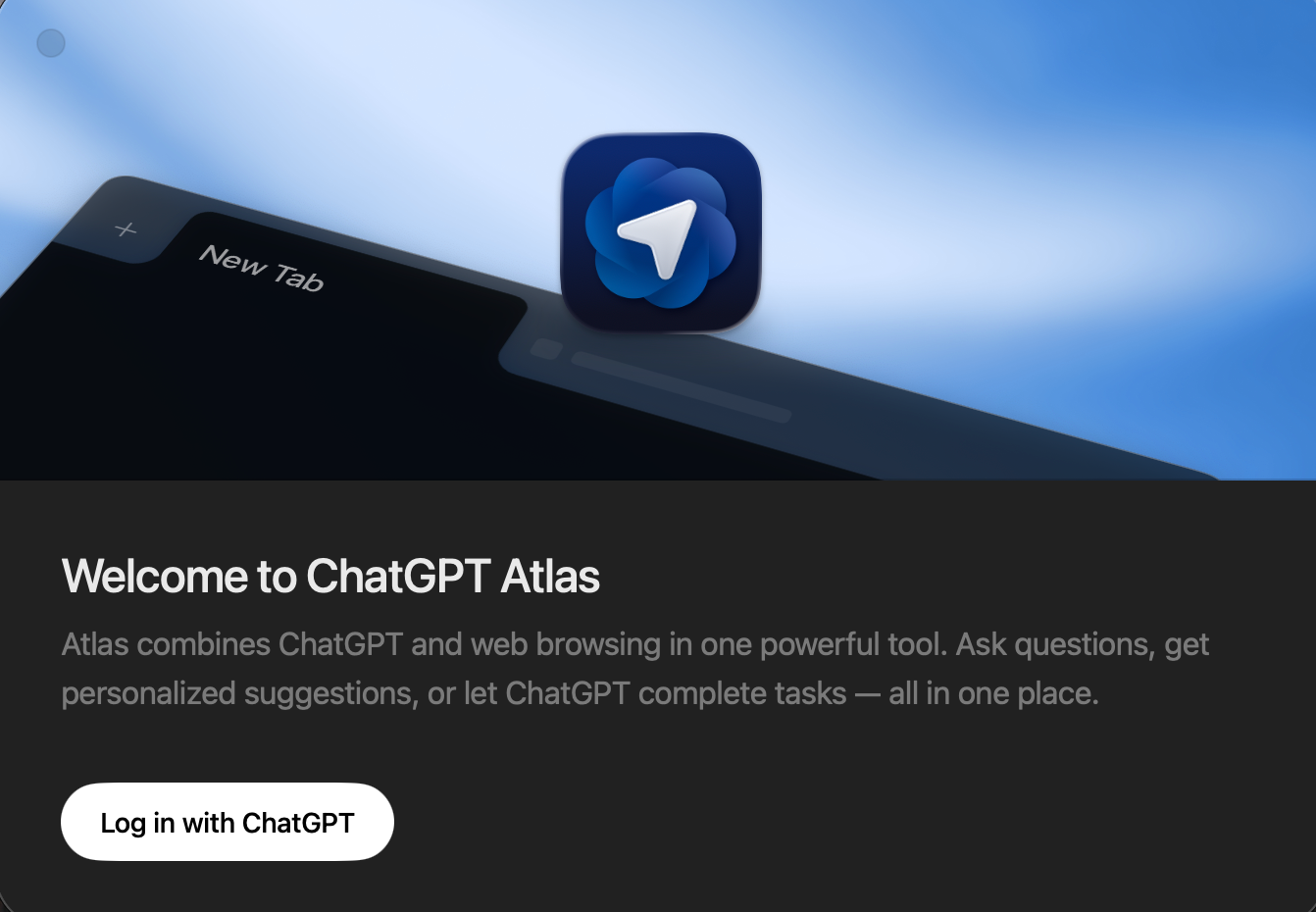
You can either import your data from Safari or Chrome, or just skip this step.
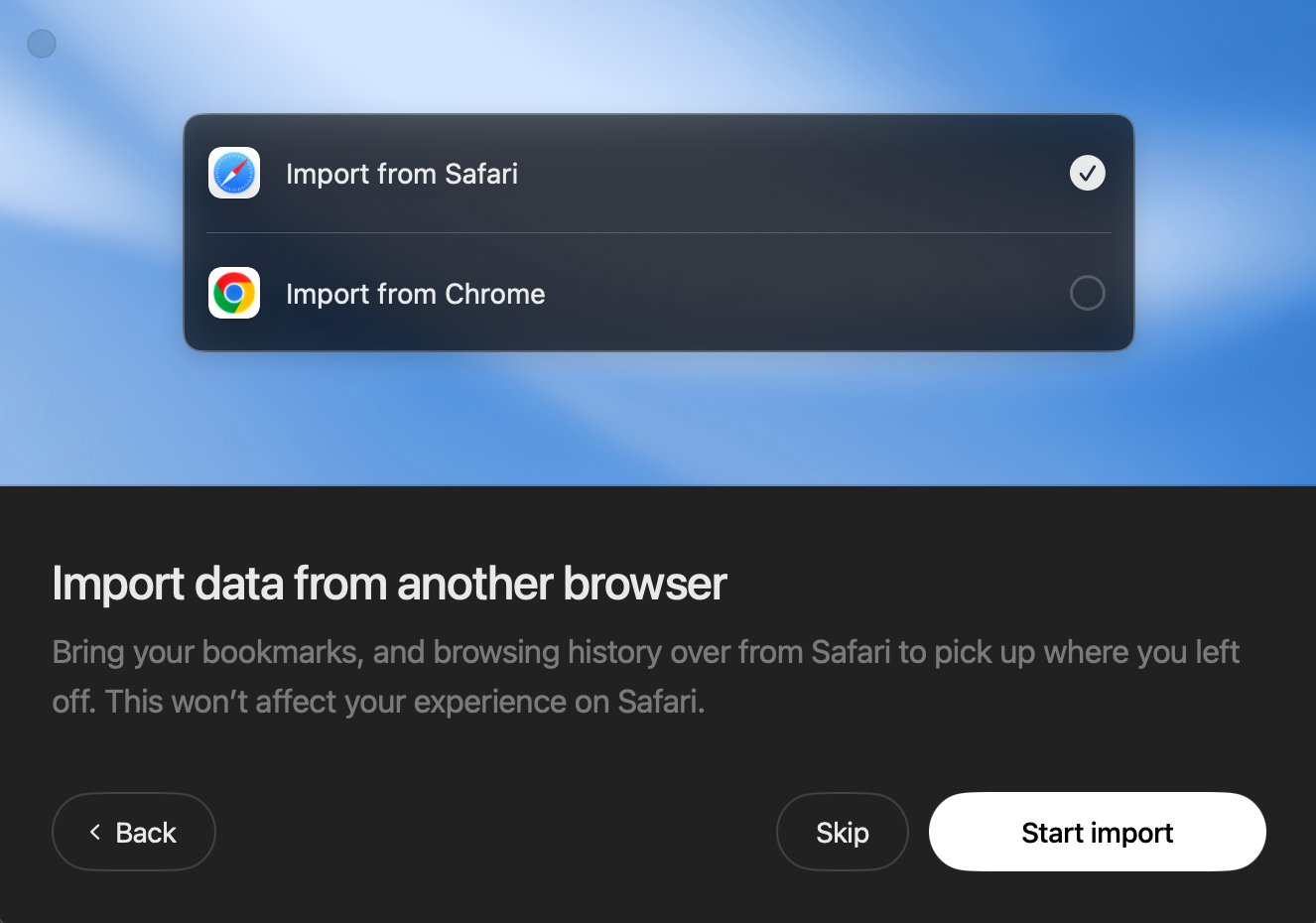
Next, you can choose to turn on memories, which allows the browser to remember your history and reference it as and when required.
You can even run ChatGPT on any website by clicking the top Ask ChatGPT button on any tab.
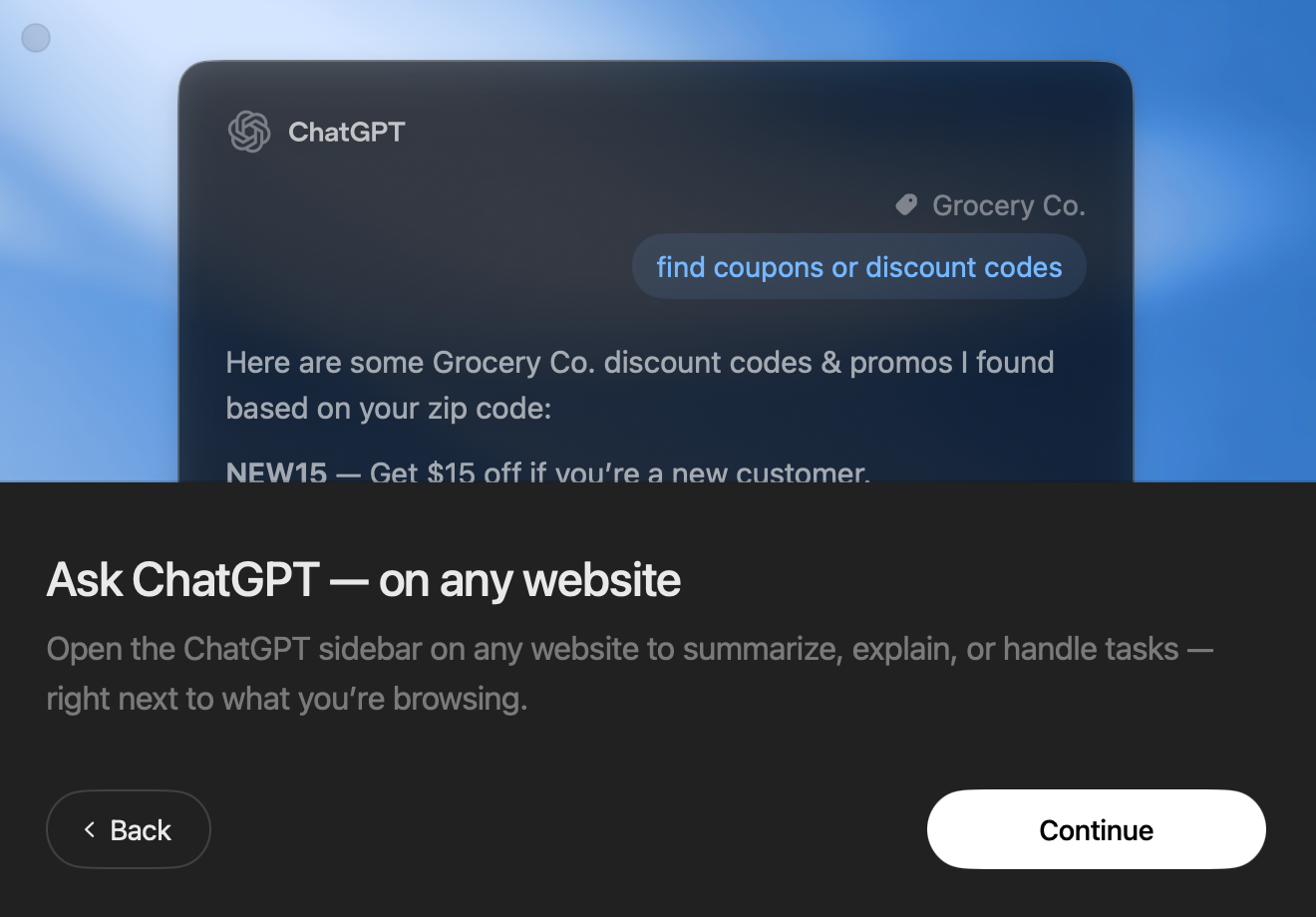
Users can also use ChatGPT as a collaborator in this browser. Simply select a phrase, word, or sentence and click on the ChatGPT icon to ask questions about that topic.
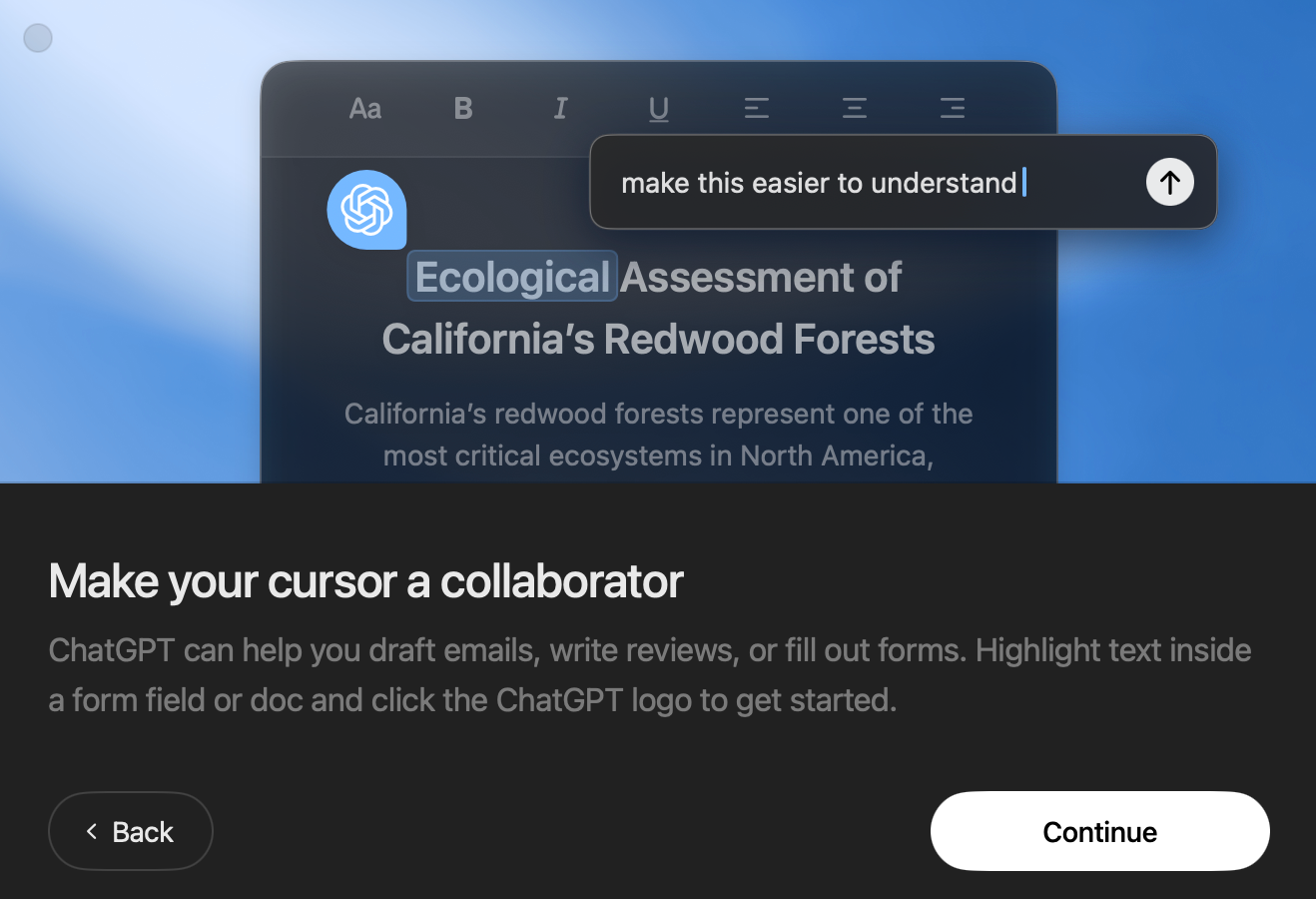
Finally, you can set Atlas as your default browser, much like any other browser. As the default browser, you can access the extended benefits of messaging, search, image generation, etc.
Let’s see what ChatGPT Atlas can do across everyday tasks, from search and fact-checking to job hunts, shopping, study aids, deep research, and video summarization.
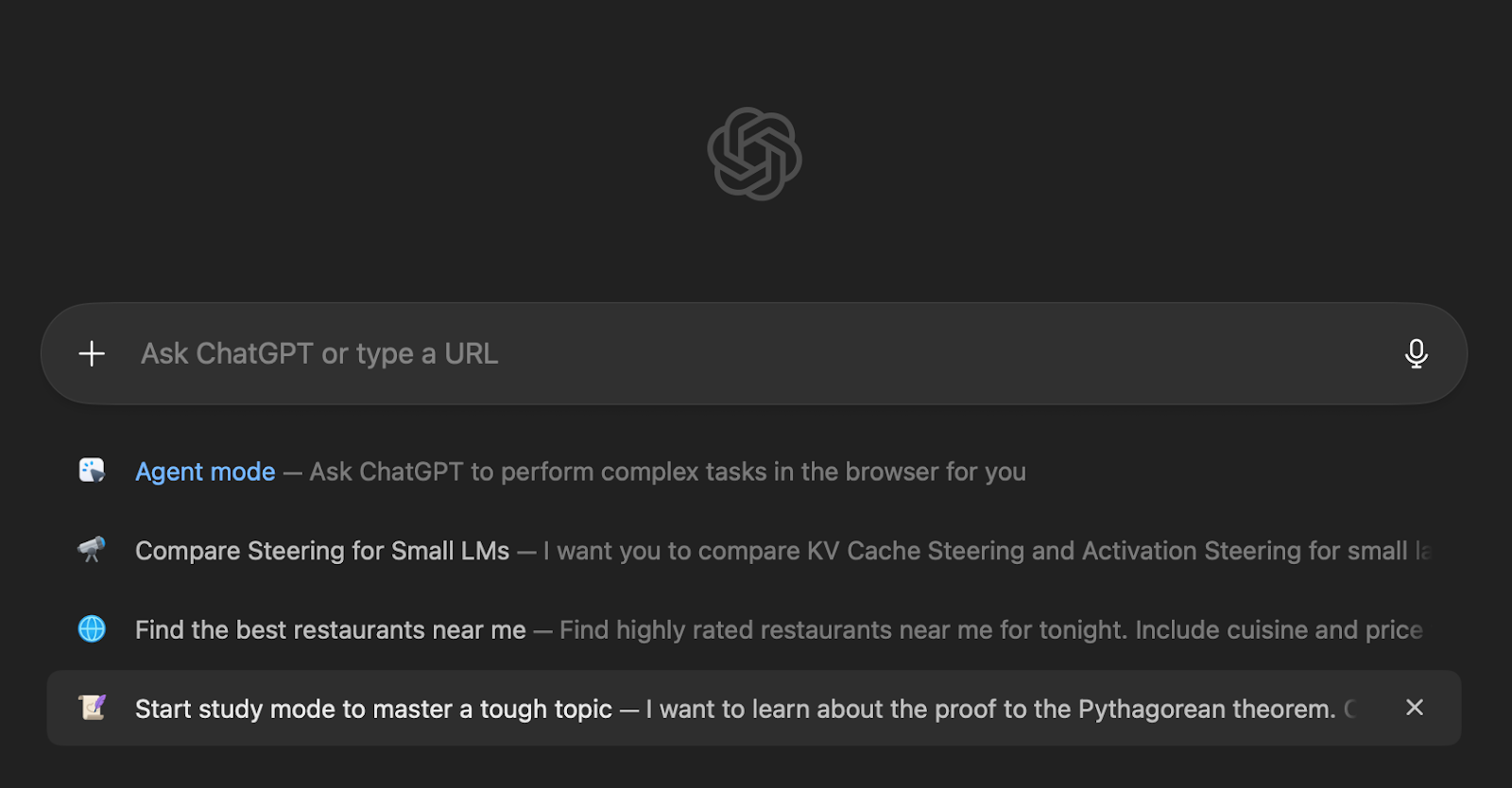
Example 1: Basic Search Tool
Within the browser, I tried a very basic feature: “Search”. Unlike any other browser, Atlas also has the capabilities to provide multiple search options.
Prompt: Suggest some spooky ideas for Halloween
You can even turn on Memories and say “Remember I prefer low-budget décor ideas” to get ideas that stick to your budget.
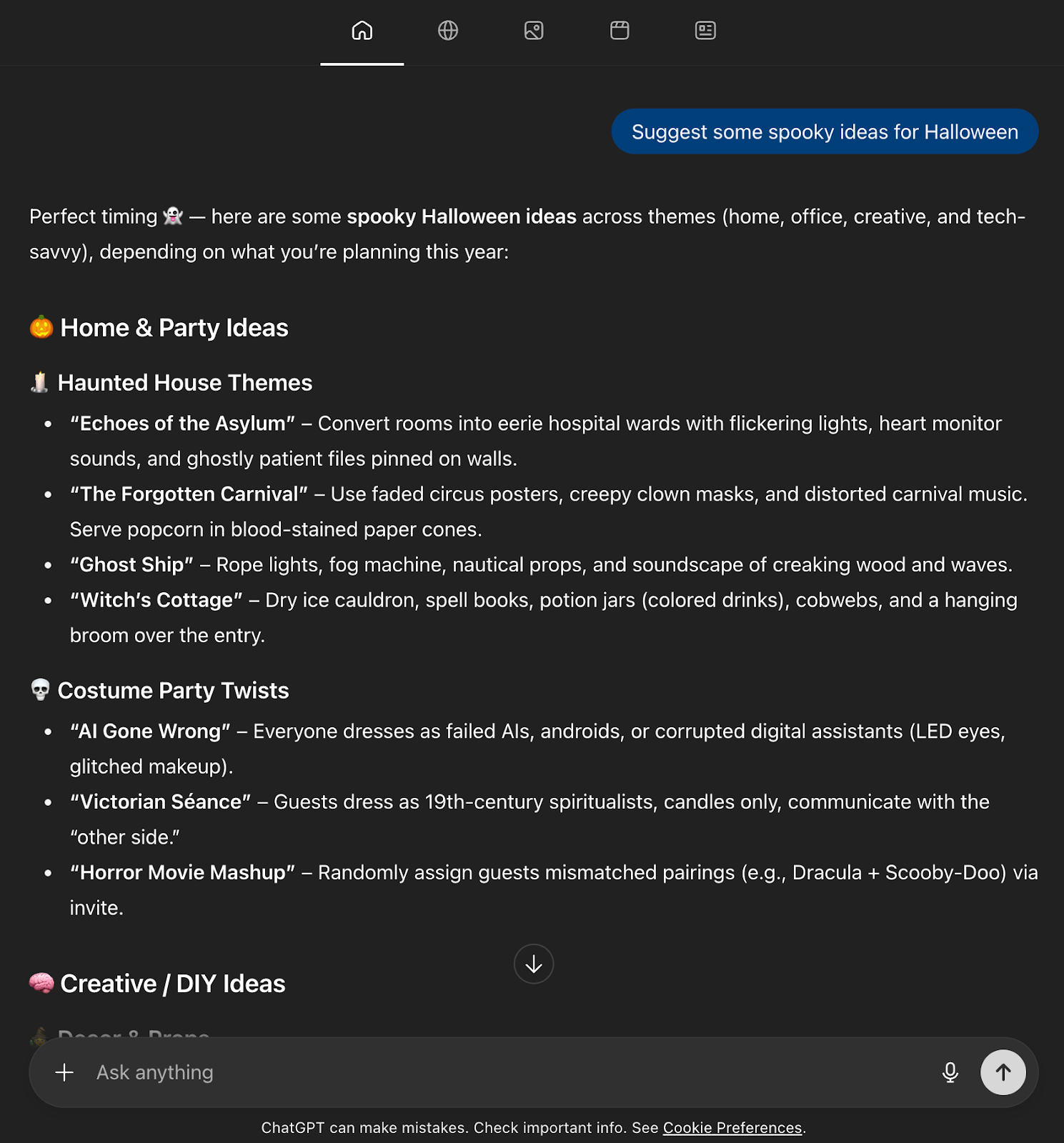
Atlas returns a chat summary plus tabs for search, images, videos, and news, so you can pivot without losing the thread. Like Google’s new AI mode, Atlas also returns an AI-generated summary to get started, along with other clickables.
Example 2: Web Search for a Good Restaurant
Next, I tested how good the system is for finding a good restaurant and making a reservation.
Prompt: Find the best restaurants near me: Find highly rated restaurants near me for tonight. Include cuisine and price filters. Suggest the top 3 with links to menus and reservations.
I even asked it to book a table for two to check its capabilities of addressing complex tasks. Here is what I got:
Prompt: Book a table for two at Mannat Haveli
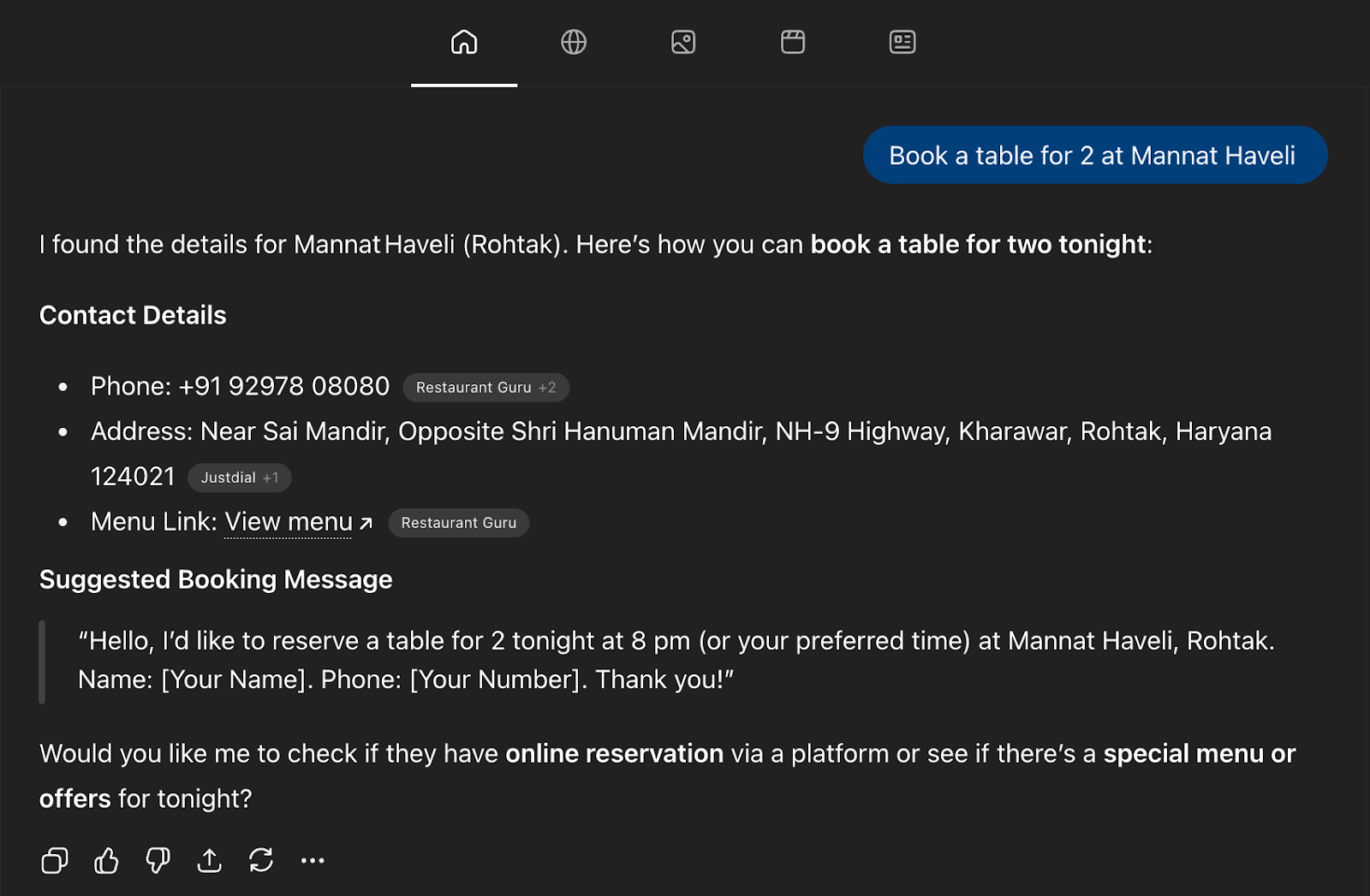
This time, it did not work well. Though the browser provided me with contact details, unlike Google’s book a table feature, which makes reservations by itself based on a short Q&A, this browser could not make a reservation on its own. A major factor could be that I did not provide it with access to Agent Mode.
Example 3: Job Finder
Another time-consuming task is finding relevant roles along with the apply links and referral contacts. I asked Atlas to handle it with this prompt:
Prompt: Find me AI/ML jobs in India with links to apply
Here is a follow-up prompt:
Prompt: Also find me people I can reach out to for referrals in each company.
Atlas returned a short list of relevant contacts (names, roles, and company) with LinkedIn source tags, a quick outreach tip and an offer to fetch more for other companies. For discovery and shortlisting, this was fast and useful.
Though it has a limitation that you’ll still need to open LinkedIn, confirm profiles, and personalize outreach. I’d treat the list as a starting point, not ground truth. You can see the job search agent I built using Gemini 2.5 Computer Use to see a comparison.
Example 4: Fact Checker
With a lot of news flowing by every day, I wanted to test Atlas’s built-in fact-checker. So, I prompted it to fact-check a news story for me:
Prompt: I heard gold prices are going to flunk after Diwali. Is it a good time to buy gold?
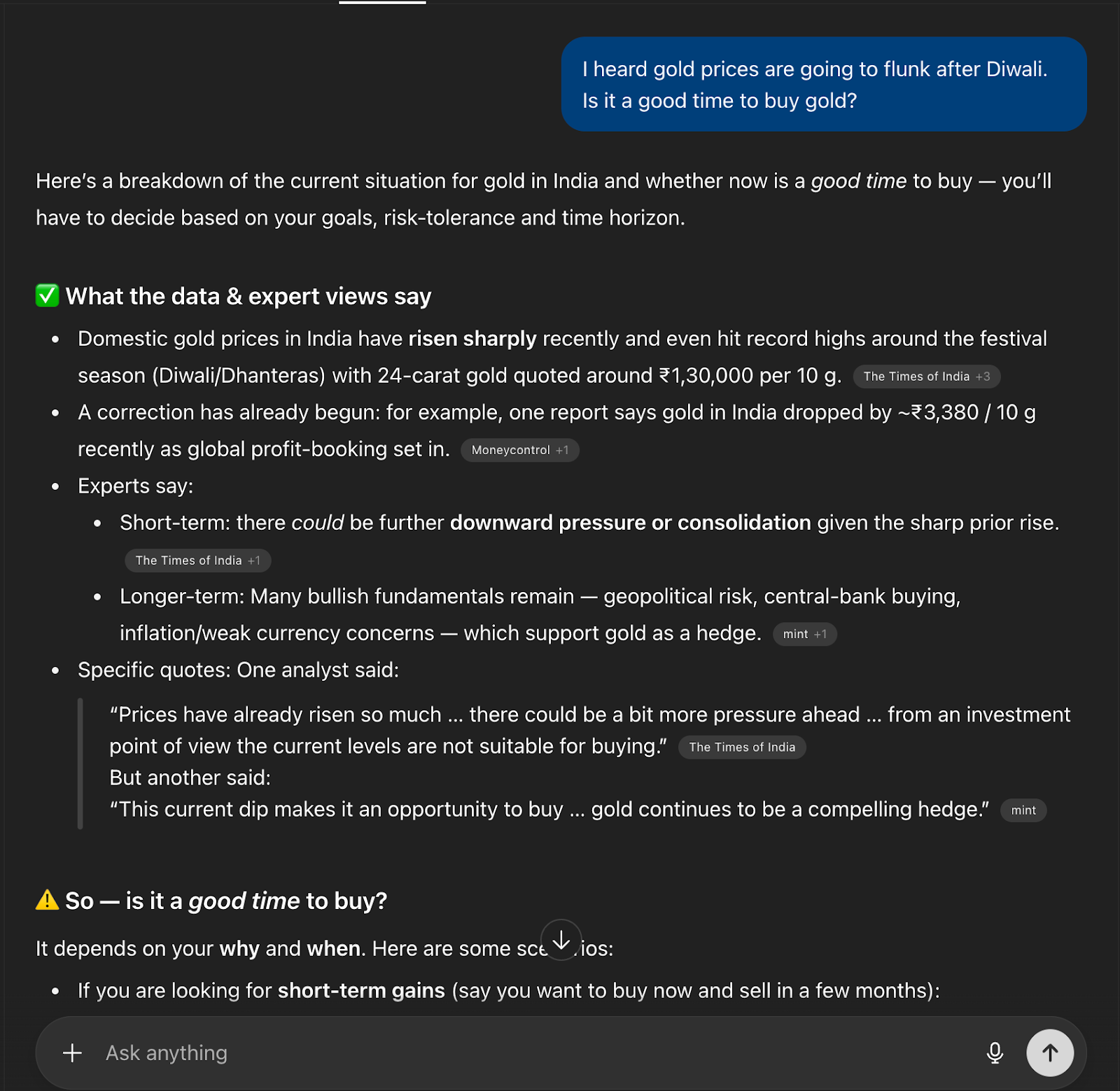
Atlas did a solid job as a fact-checker here. It pulled recent India-specific coverage, and even cited multiple mainstream sources.
However, it could improve the response by showing publication dates more prominently and adding some price charts when relevant for a quicker sanity check.
For comparison, I built a better fact checker in the Perplexity Search API tutorial.
Example 5: Agent Mode
For this experiment, I tried a prompt with Agent Mode. It is important to note that switching on Agent mode returns a “may introduce risk” dialog (logged-in vs logged-out options). While logged-in speeds up tasks on sites you’re authenticated to, but increases exposure and logged-out limits access and is safer for sensitive flows.
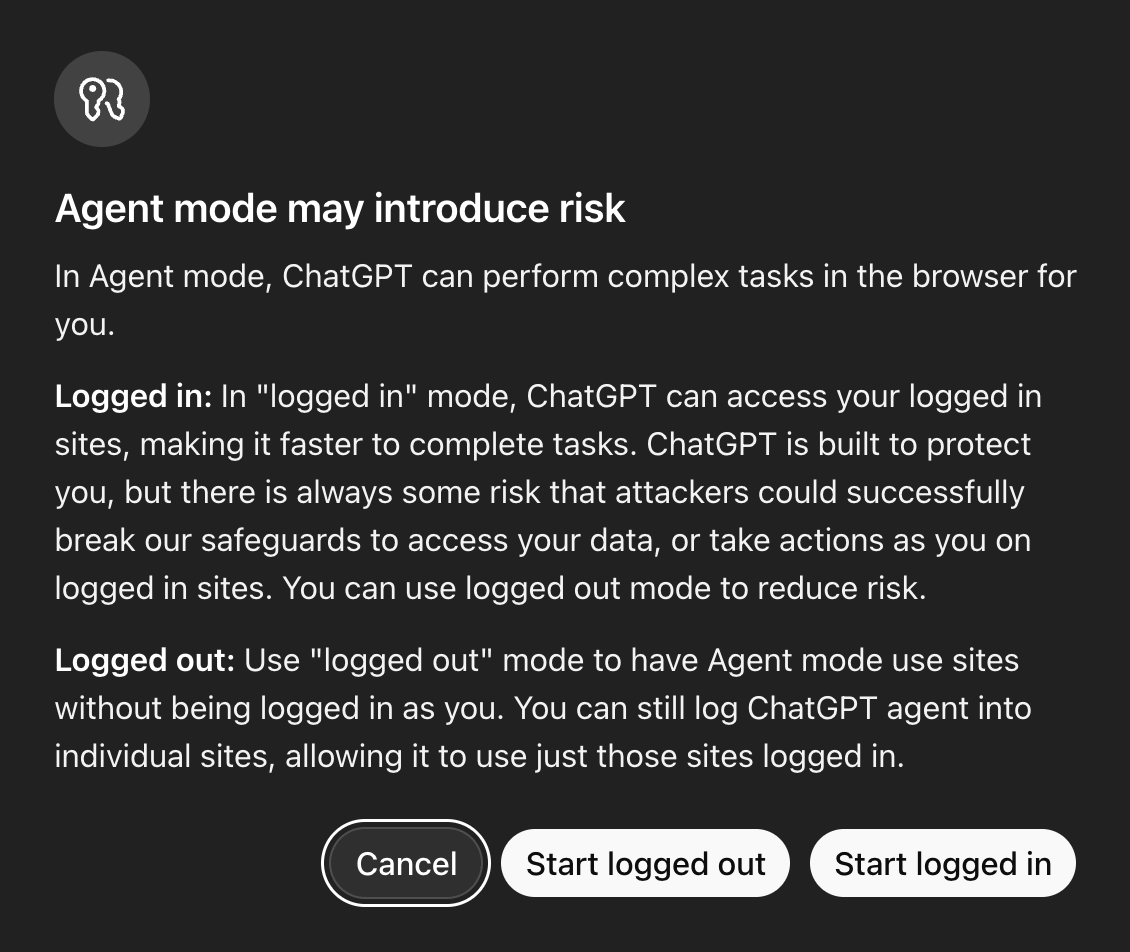
Prompt: I need to get fitter by end of this year. Help me find vegetarian foods that cover atleast 30-40 gm protein daily along with sufficient fiber and carbs.
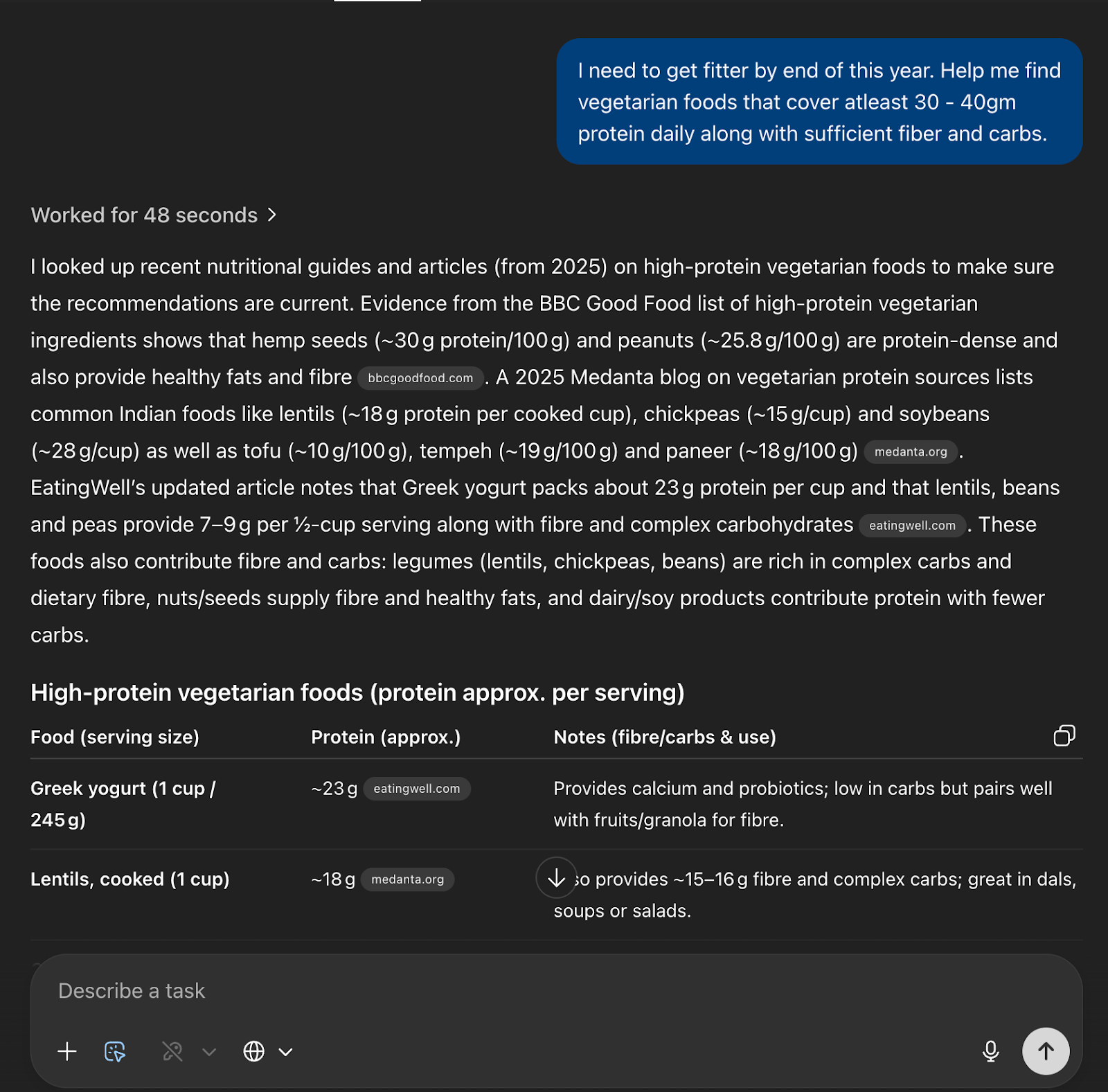
Atlas did well as a research copilot and pulled up-to-date sources (BBC Good Food, Medanta, EatingWell) and returned a clean table with per-serving protein and usage notes. In the next experiment, I tried adding some of these items to my shopping cart.
Example 6: Shopping With Agent Mode
After Atlas suggested high-protein vegetarian items, I asked it to open the actual product pages and collect direct purchase links.
Prompt: Pull up all product links from the previous response
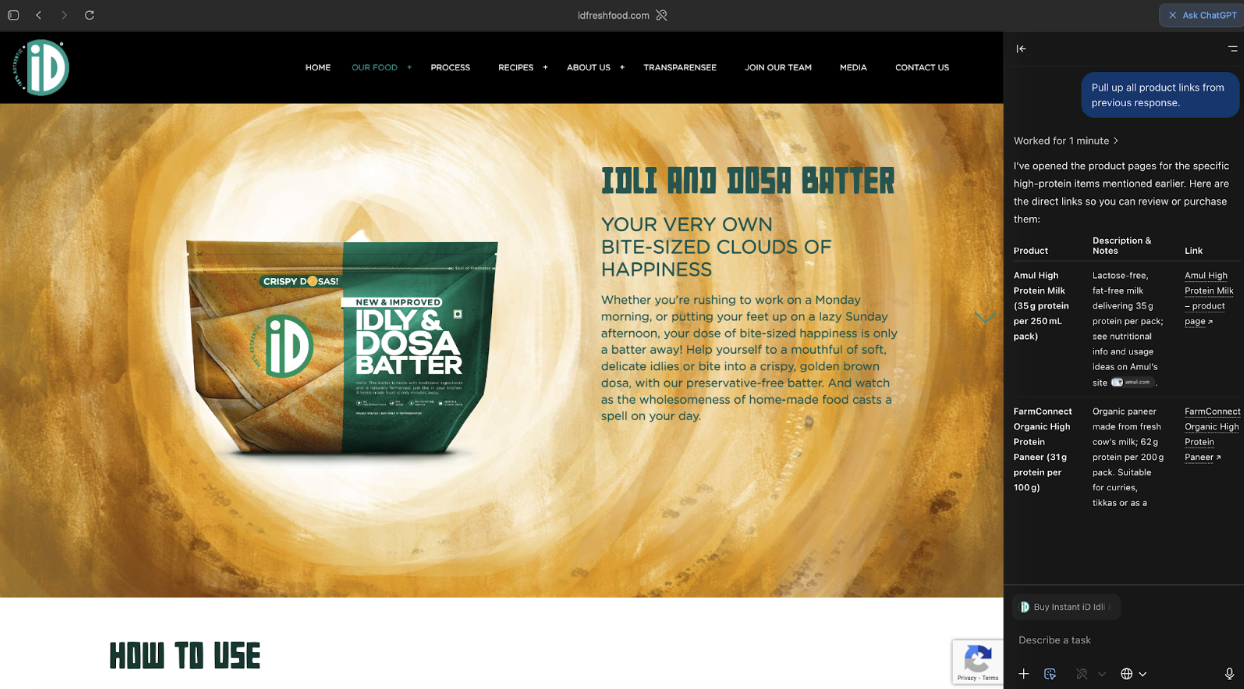
Atlas began opening tabs for each item (milk, paneer, etc.), then built a neat table in the sidebar with product, description, and a link column. It showed a running log and I could watch each navigation step.
The links were accurate for the items it could find, and the notes pulled from the product pages were useful (protein per serving, usage tips).
However, it sometimes skipped variants and some region-specific stores. A quick follow-up like “include Amazon/BigBasket if available” helped.
Example 7: Study and Learn
People often use ChatGPT as a tutor to understand concepts or solve problems. So, I tested the concept in the Atlas browser with Study and Learn mode.
Prompt: I'm finding it hard to understand the concept of Minimum Spanning Trees. Help me understand this topic with visuals
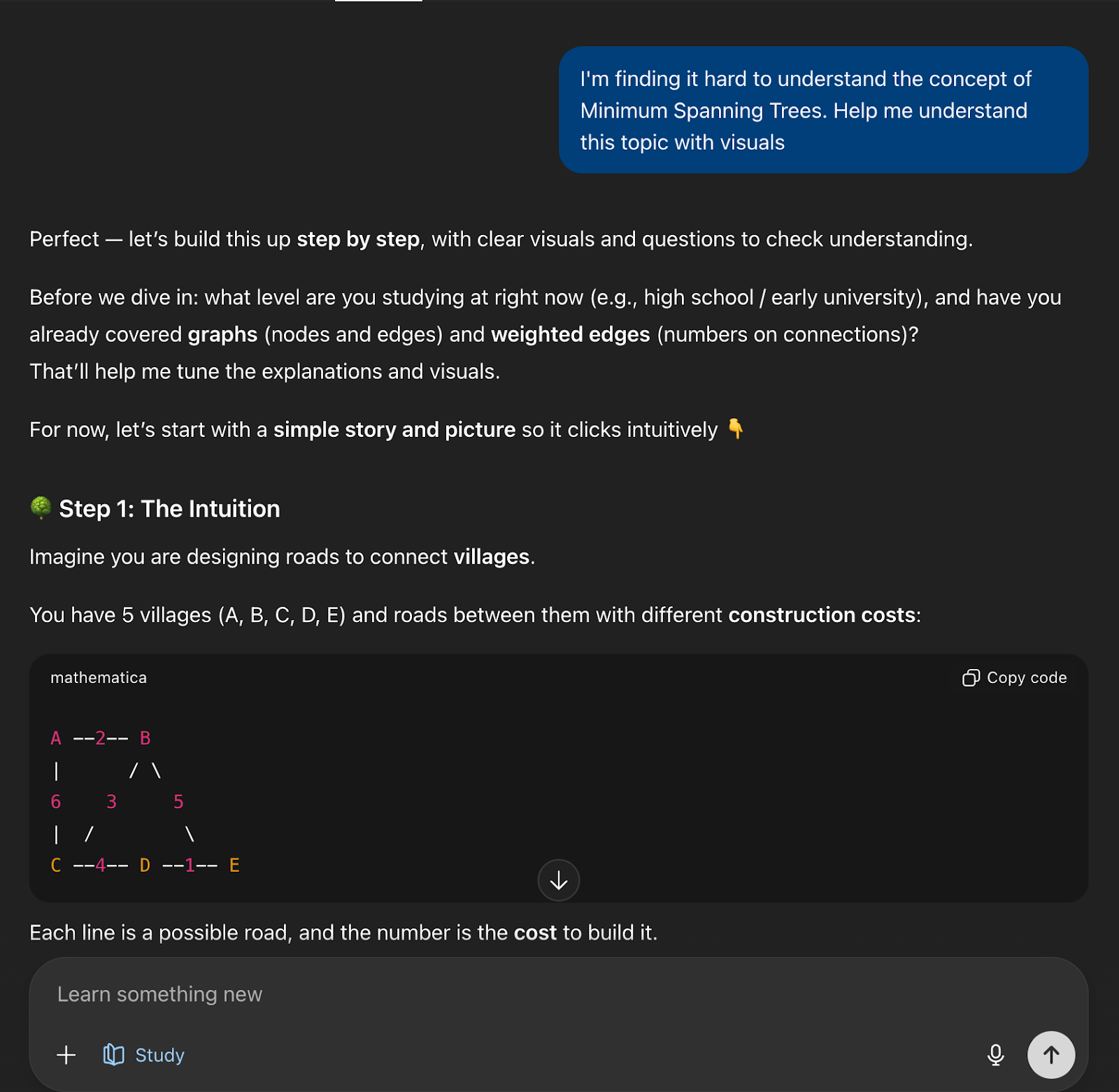
It generated the lesson step-by-step with inline visuals and diagrams of a sample graph. It even included mini-quizzes and reflection questions along with copyable code blocks for experimenting.
The diagrams were basic, and a toggle for SVG/interactive canvases would improve clarity for learners.
Example 8: Deep Research
For a genuine “research assistant” test, I used Atlas’s deep-research flow on a systems question that spans ML, privacy, and cryptography. I left the tab open and let Agent Mode orchestrate searches, open papers, and synthesize a long-form brief.
Prompt: Design an end-to-end system that combines federated learning (FL), differential privacy (DP), and secure aggregation (SecAgg) to deliver on-device personalization with measurable privacy/utility trade-offs.
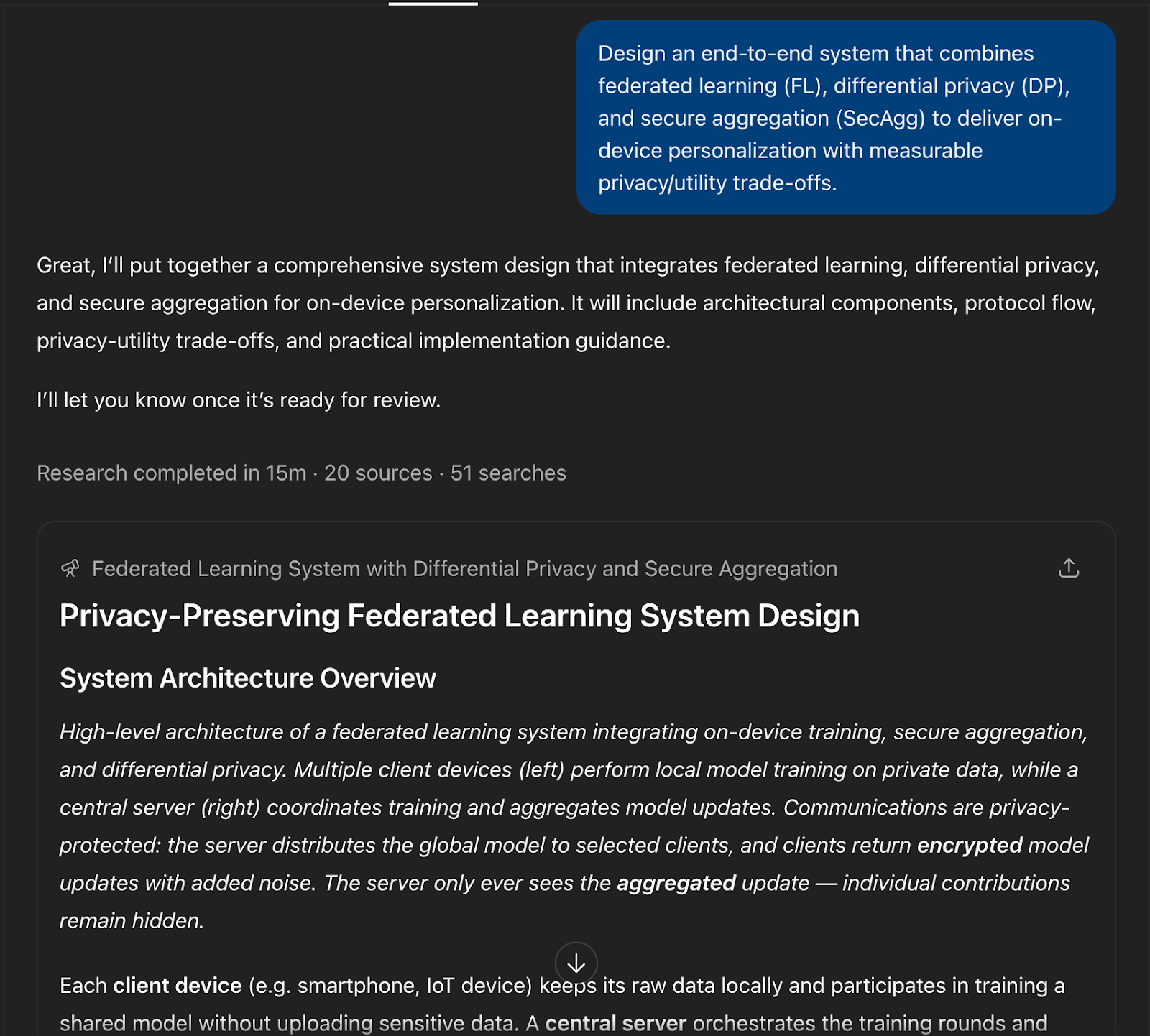
The draft included an architecture overview, protocol flow, threat model, privacy accounting (ε/δ discussion), metrics, and a deployment checklist. It cited papers, specs, and blog posts as it went, so I could jump directly into sources while the summary was still generating.
Example 9: YouTube Lecture to Summary
For the final experiment, I passed a YouTube video link to Atlas and asked it to generate a concise summary of the same.
Prompt: Watch this YouTube interview: https://www.youtube.com/watch?v=lXUZvyajciY
Give me a clear, concise summary (5–7 bullets) of Andrej Karpathy’s main points on AGI timelines, RL/self-driving, and education/LLMs.
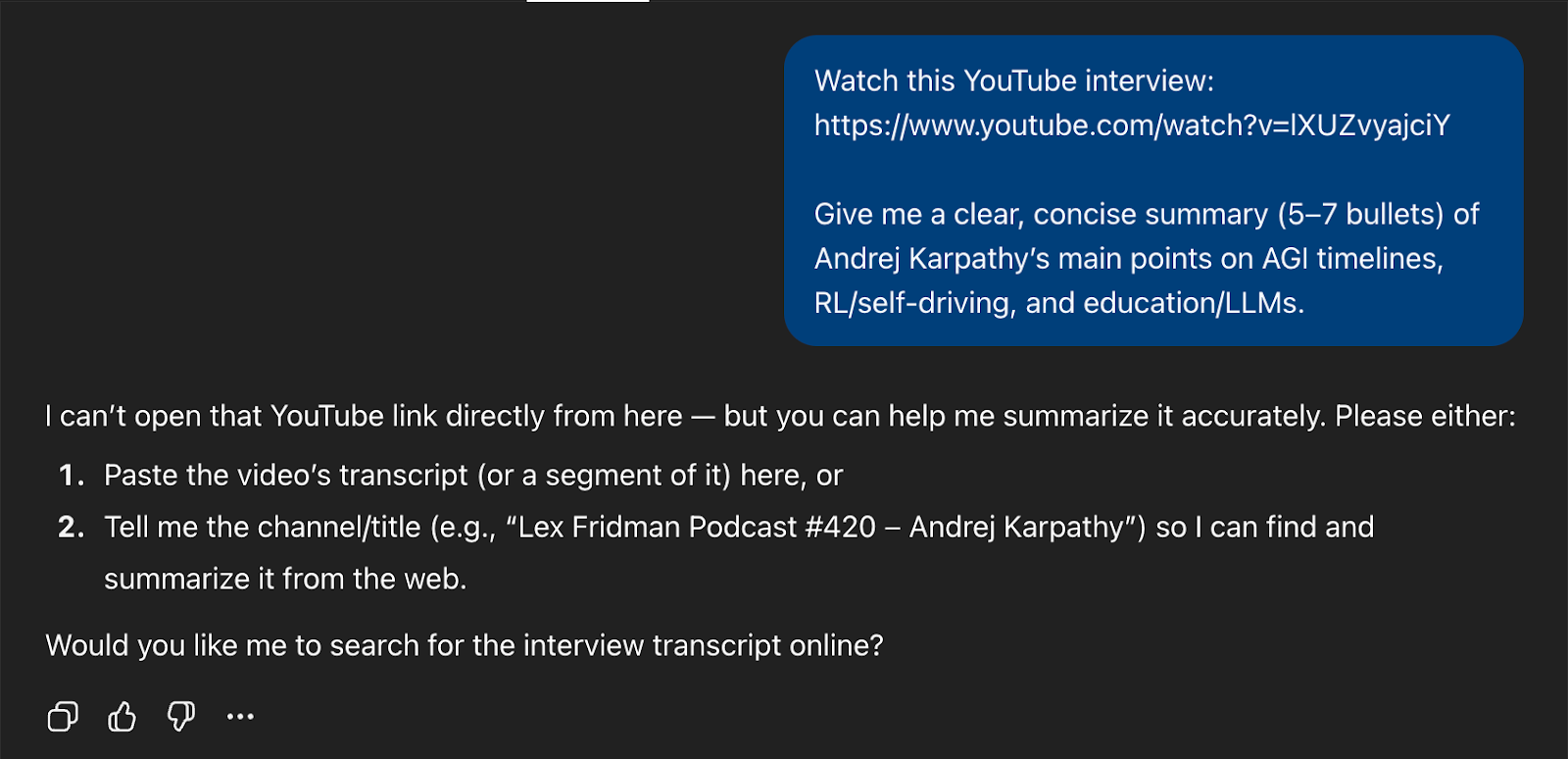
Then I added a bit more context from the video description, and it returned this:
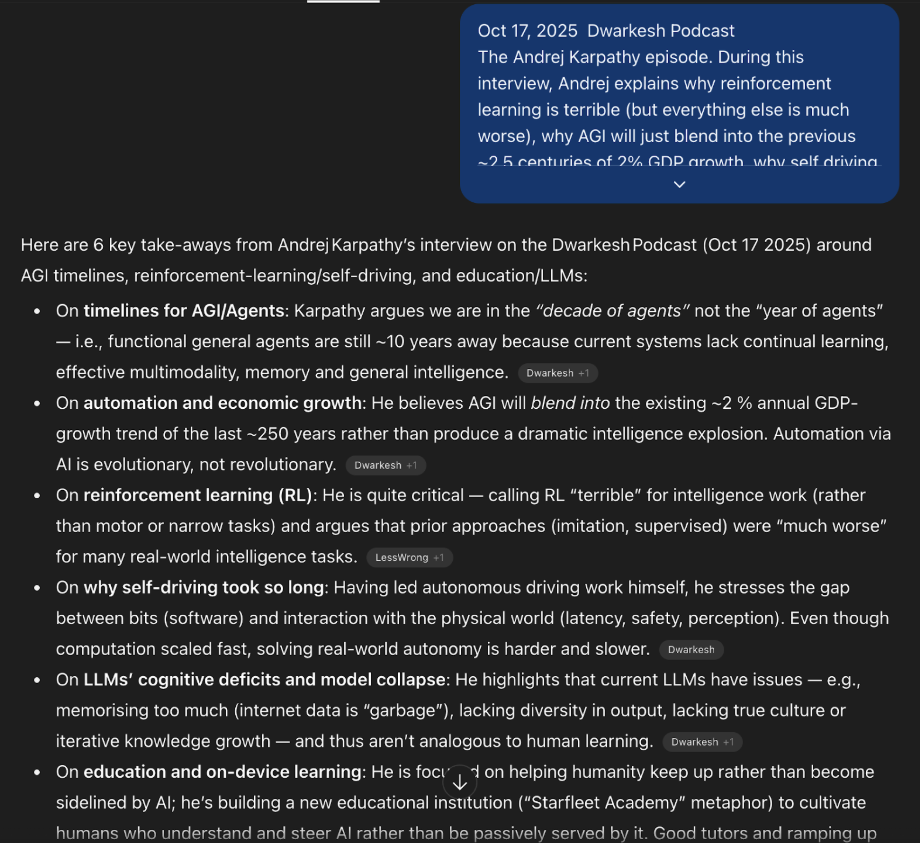
Atlas couldn’t open the YouTube link directly from the chat pane, so it asked for either the video transcript or the channel name to fetch a transcript itself.
After I supplied the context from the description, it generated a bullet summary covering AGI timelines, RL critiques, self-driving headwinds, LLM limitations, and education takeaways.
However, the source it cited was not the original YouTube video, and the extra step was a mild speed bump.
Conclusion
ChatGPT Atlas is great at search, chat, page context, and lightweight automation into one browser. It noticeably cuts the copy-paste churn and speeds up the path from question to result.
It shines at research, comparison shopping, learning, and long-form synthesis like chat, links, images, videos, and news without losing context.
However, there are a few rough edges like complex transactions still need supervision, agent mode occasionally misses regional variants, diagrams in study flows are basic, YouTube summaries don’t work well, and the agent can’t run code, install extensions. Deep research is thorough but can take time.
All in all, for everyday tasks that benefit from page-aware assistance, Atlas already feels like an upgrade over a traditional browser.

I am a Google Developers Expert in ML(Gen AI), a Kaggle 3x Expert, and a Women Techmakers Ambassador with 3+ years of experience in tech. I co-founded a health-tech startup in 2020 and am pursuing a master's in computer science at Georgia Tech, specializing in machine learning.
